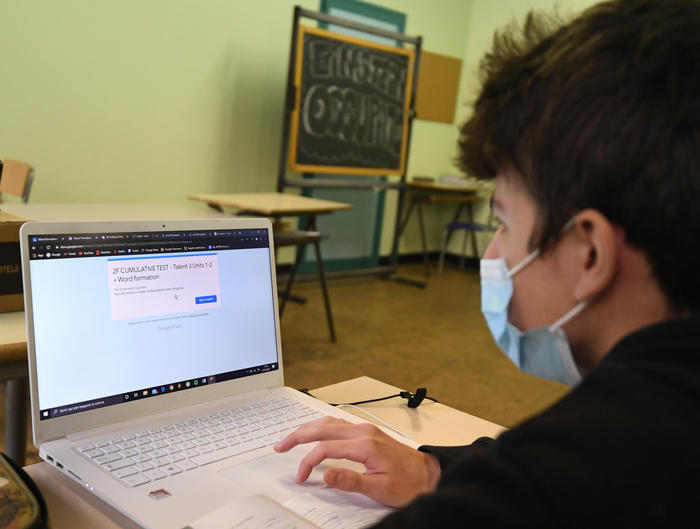Only 47% of high school kids who have returned in attendance in recent weeks see improvements in transportation.
More or less the same amount that has seen organizational changes at school, from staggered admissions to reduced class hours, up to afternoon teaching.
And on the school in the presence at 50%, carte blanche to institutions: the majority (62%) say that they have chosen not to divide the classes, but there are those who have seen their group 'dismembered'.
Everything (or almost) as before.
For many high school kids, returning to class has so far been a movie they've already seen.
Compared to last autumn there are few institutions that, despite having reopened, have radically changed the organization of the school day, incorporating the operational 'advice' contained in the guidelines approved by the prefectural tables at the end of December.
Only 1 in 2 students had to deal with staggered entry and exit times, shortened lessons and afternoon teaching;
just 1 in 4 saw teaching extended even to Saturday (many, however, already did it).
Not to mention transport: less than half (47%) noticed improvements.
Here they are the first weeks of school in the presence of 2021, told by 3500 students of high schools, technical and professional institutes - reached by a survey of
Skuola.net
- resident in those Regions where 'live' teaching has resumed.
Assuming that this has really happened, since almost 3 out of 10 say, for various reasons, that they have not yet been able to sit at their counter.
The real enemy of reopening, in addition to the contagion curve, has always been crowding (outside and inside schools or on public transport).
Thus, to avoid this, it was decided to invite the institutions to further divide the classes that would have to physically go to class every day (ensuring the presence of at least 50% of the students).
By identifying two shifts: 8: 00-14: 00 and 10: 00-16: 00.
But, to date, for 56% of the children the time has remained the same as always.
And, even where changes have been made (44%), the hypothesis of lessons in the afternoon has in any case been avoided as much as possible: only 1 in 4 has a fixed shift until 16:00, the others (72%) or they always go only in the morning or alternate between the two bands.
The reason?
It is twofold.
On the one hand, in fact, not all schools still seem to have fully digested the news.
An example?
For those who will have to experience the new time (10: 00-16: 00), in 4 out of 5 cases a precise indication was not given for lunch (36% even said that a real break was not foreseen) .
On the other hand, however, it is not always a specific will of the individual institutes given that not all territories have given the green light to the restyling.
Among the other hypotheses developed to facilitate the return to face-to-face teaching is also that of adding a day of lessons to those who previously did the short week, extending lessons to Saturday.
But, if we remove the 46% who already said they do six days of school out of seven, we realize that just 28% of the other children will experience the long week for the first time.
The invitation to assign each student a specific entry time has also fallen partially on deaf ears, to avoid crowding in front of the institutes: 50% will continue to enter at any time, as long as it is in time for the bell.
Same fate for the suggestion to shorten the hour of the individual lessons - from 60 to 45 minutes - above all to allow the ventilation of the classrooms: it is happening only in half of the cases.
But, in the end, the thing that interests children most is another: when should you go to school and when, instead, should you stay at home?
Also on this, each school has adopted its own model.
Most students (62%) say that the school tried to alternate classes and not pupils: everyone is in attendance or everyone in Dad but not all classes go to school.
28%, on the other hand, saw their class divided into groups (some go to school and the others stay at home, alternating on the days) to have all the classes represented.
Finally, there are those who are undergoing a double alternation: in 1 case out of 10 the institute has divided both the classes and, within them, the students.
Because the approach that seems to prevail is the more prudent one: only 18% of students say that in the coming weeks they will try to do more school days in the presence than in Dad, another 72% will arrive at the most in half and half, on 10 % argues that a clear articulation has not yet been decided.
Therefore, we continue to navigate on sight.
It is therefore not surprising that 60% would have waited yet to reopen.

